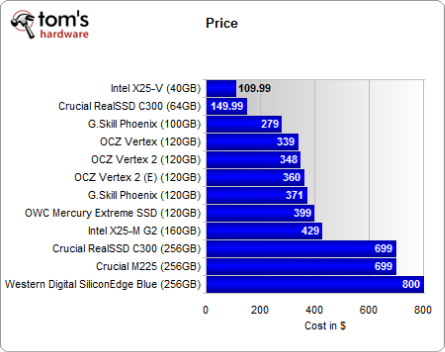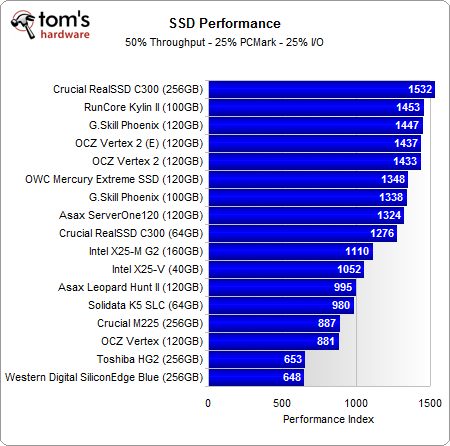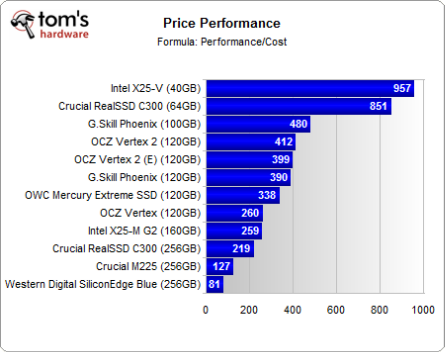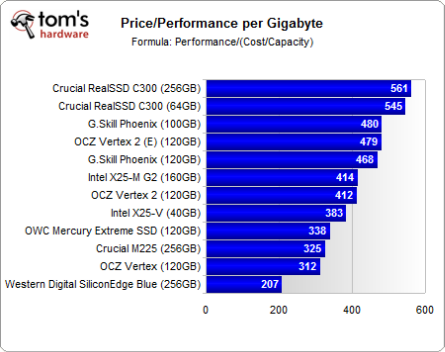Tom's Hardware's Summer Guide: 17 SSDs Rounded Up
Which SSD should you buy today? Seventeen flash-based drives battle across a benchmark suite that include throughput, I/O performance, consistency, power consumption, efficiency, and the best overall bang for the buck. The time is right to upgrade.
Performance Indexes
This chart lists our SSDs' average online prices. If the drive isn’t listed, it's because we couldn’t find any merchant with availability or even prices. As you can see, 256 GB SSDs remain way out of range for mainstream consumers, costing as much as a mainstream laptop. The 100 to 160 GB zone is more palatable in the roughly $300 price range. The 40 and 64 GB SSDs are more affordable still, but they have performance disadvantages on top of their lower capacities.
Recently, some prices were lowered. Since this is a static chart we cannot update it on a regular basis, so we recommend to check prices of your favorite SSDs before making a purchase. The following cost per gigabyte and performance evaluations are based on prices dated end of August 2010.
Cost per gigabyte isn’t a key metric when purchasing an SSD, but it’s interesting to compare the candidates. The 64 GB RealSSD C300 looks like a bargain, but keep in mind that it doesn’t perform well in all benchmarks. SandForce-powered SSDs are typically more expensive per gigabyte, but they also deliver balanced performance. WD is too expensive considering its performance limits, and OWC needs to get a grip.
You might remember our performance index from previous articles. We weighted 50% for throughput, 25% on I/O performance, and 25% for PCMark Vantage. This should reflect everyday performance. The fastest drive is the 256 GB RealSSD C300. Overall performance winners are the SandForce SF-1200 drives. They deliver better performance than Indilinx drives without utilizing any cache memory. Unfortunately, they’re also more expensive.
Many users will be more interested in performance per dollar than pure performance. In this light, the two entry-level SSDs by Crucial and Intel do exceptionally well, providing twice the performance per dollar than all other drives. As performance here doesn't vary as much as cost, the differences in this index are significant. Interestingly, SandForce SF-1200 SSDs rule here once again.
Lastly, we decided to look at performance per dollar and per gigabyte, because ultimately this is what has the highest relevance. You want maximum performance at a reasonable price, and you probably also want reasonable storage capacity. In this overall summary, Crucial shines, followed by the SandForce SSDs and Intel. Even the low-cost SSDs are serious alternatives.
Get Tom's Hardware's best news and in-depth reviews, straight to your inbox.
Current page: Performance Indexes
Prev Page Benchmark Results: Power Efficiency Next Page Conclusion



